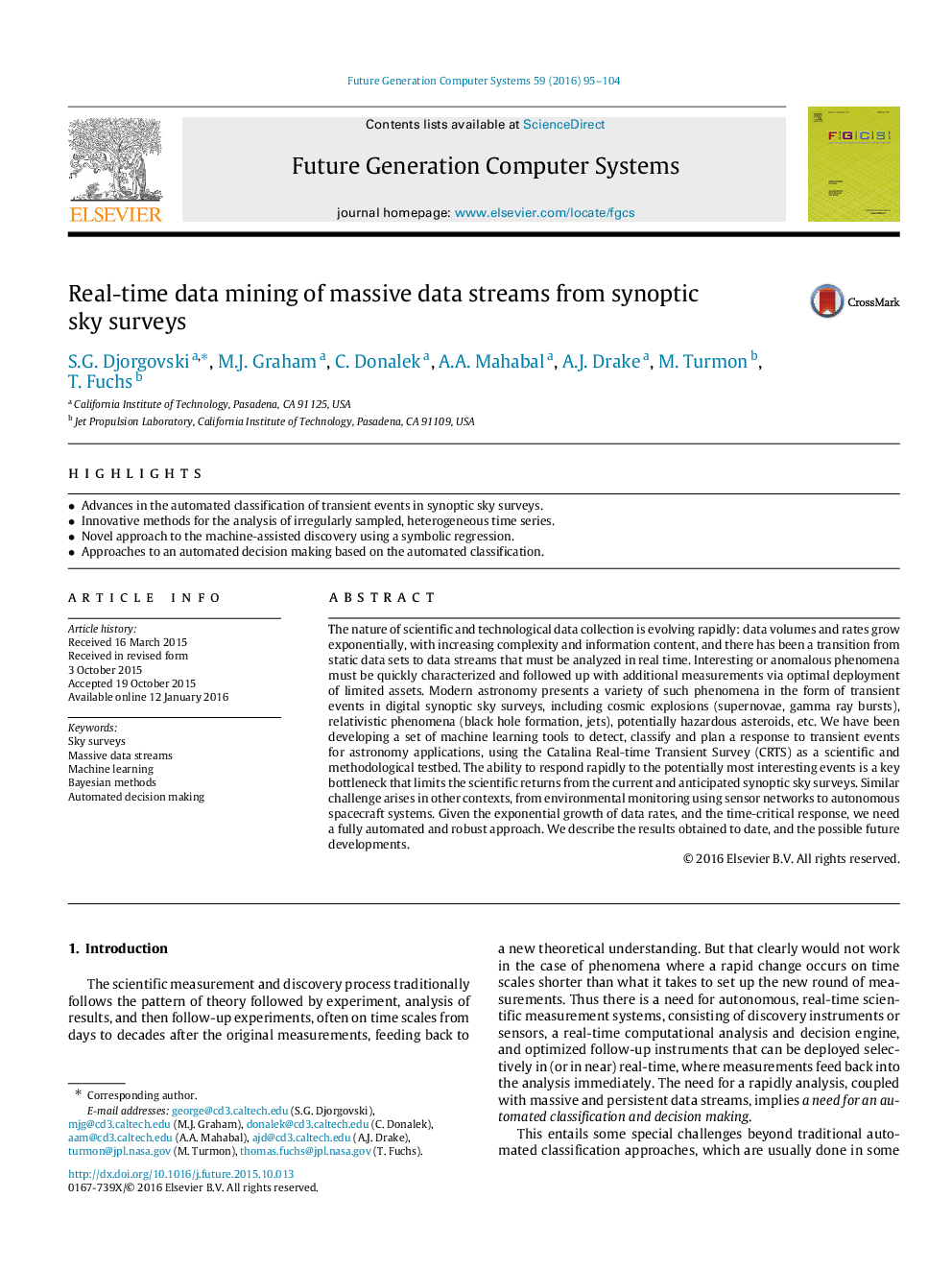| Article ID | Journal | Published Year | Pages | File Type |
|---|---|---|---|---|
| 424861 | Future Generation Computer Systems | 2016 | 10 Pages |
•Advances in the automated classification of transient events in synoptic sky surveys.•Innovative methods for the analysis of irregularly sampled, heterogeneous time series.•Novel approach to the machine-assisted discovery using a symbolic regression.•Approaches to an automated decision making based on the automated classification.
The nature of scientific and technological data collection is evolving rapidly: data volumes and rates grow exponentially, with increasing complexity and information content, and there has been a transition from static data sets to data streams that must be analyzed in real time. Interesting or anomalous phenomena must be quickly characterized and followed up with additional measurements via optimal deployment of limited assets. Modern astronomy presents a variety of such phenomena in the form of transient events in digital synoptic sky surveys, including cosmic explosions (supernovae, gamma ray bursts), relativistic phenomena (black hole formation, jets), potentially hazardous asteroids, etc. We have been developing a set of machine learning tools to detect, classify and plan a response to transient events for astronomy applications, using the Catalina Real-time Transient Survey (CRTS) as a scientific and methodological testbed. The ability to respond rapidly to the potentially most interesting events is a key bottleneck that limits the scientific returns from the current and anticipated synoptic sky surveys. Similar challenge arises in other contexts, from environmental monitoring using sensor networks to autonomous spacecraft systems. Given the exponential growth of data rates, and the time-critical response, we need a fully automated and robust approach. We describe the results obtained to date, and the possible future developments.
